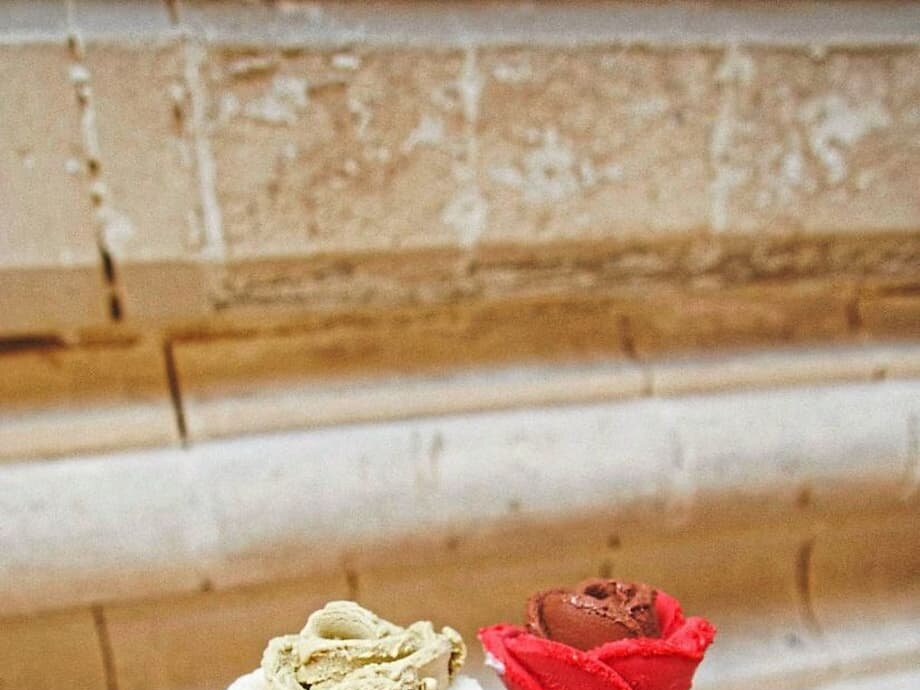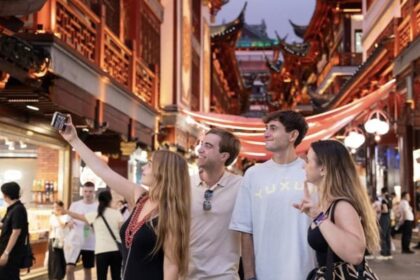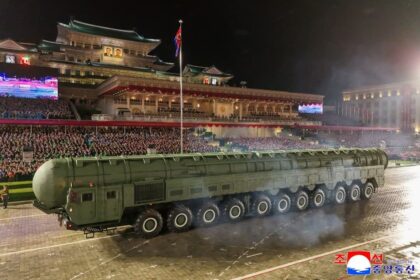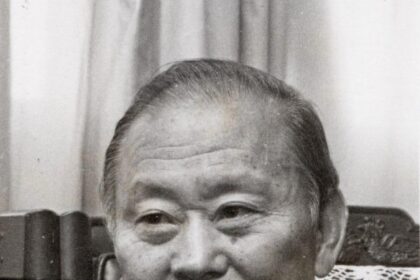China’s Ice Cream Boom: A Market Transformed
Once a simple way to cool off during hot summers, ice cream in China has undergone a dramatic transformation. What was once a basic, affordable treat has evolved into a vibrant industry defined by innovation, aesthetics, health consciousness, and cultural creativity. Today, Chinese consumers—especially the younger generation—are driving a new era for ice cream, where both premium and affordable options coexist, and where the humble frozen dessert has become a canvas for art, nostalgia, and social connection.
What’s Behind the Upscale Ice Cream Craze?
China has been the world’s largest ice cream market since 2014, with revenues reaching RMB 137.4 billion (about USD 19.16 billion) by 2024. The market is projected to grow even further, potentially hitting RMB 237.1 billion (USD 33.03 billion) by 2033. This explosive growth is not just about quantity—it’s about the changing tastes and expectations of Chinese consumers.
Young people, like 17-year-old Pan Yang, are drawn to visually stunning ice creams: matcha-flavored treats adorned with petals, or cones shaped like flowers and fruits. On lifestyle-sharing apps such as Xiaohongshu (Rednote), users regularly post photos of these artistic creations, turning ice cream into a social media sensation. Museums and tourist attractions have joined the trend, offering ice creams inspired by cultural artifacts—sometimes even sold as ‘blind boxes’ with surprise flavors, adding an element of excitement and collectability.
Food industry analyst Zhu Danpeng observes that this trend reflects a deeper desire for emotional and spiritual satisfaction. For many young consumers, ice cream is no longer just a snack—it’s an experience, a status symbol, and a way to connect with friends and culture.
Premiumization and the Rise of High-End Brands
Brands like Chicecream have pioneered the high-end ice cream segment in China, achieving rapid success by focusing on quality, unique flavors, and sophisticated branding. Chicecream’s meteoric rise is emblematic of a broader shift: as living standards and disposable incomes rise, consumers are willing to pay more for products that offer innovation, authenticity, and a sense of luxury.
Romanlin Ice Cream, founded in 2019, is another example. The company has expanded rapidly in China and Malaysia, offering over 30 flavors tailored to local tastes. Chairman Ma Zhichao emphasizes the use of premium ingredients and advanced equipment to deliver rich flavors with less sugar and fat, catering to health-conscious customers without sacrificing taste.
Brand expert Zhan Junhao notes that while upscale brands are more expensive, consumers are increasingly willing to pay for quality and creativity—provided the product delivers on its promises. As one 23-year-old consumer, surnamed Dong, puts it: she’ll pay more for top-quality ingredients, but not for subpar products.
Affordable Indulgence: The Return of the 5-Yuan Era
Despite the boom in premium ice creams, 2024 has seen a surprising resurgence of affordable options. The so-called ‘5-yuan era’—named after the price point of around RMB 5 (less than USD 1)—has returned, with consumers pushing back against overpriced, flashy products. Social media discussions are filled with nostalgia for classic, cheaper ice creams and skepticism toward brands that charge a premium without delivering real value.
This shift is partly a reaction to economic uncertainty and a broader move toward rational, selective consumption. As the Global Times reports, the decline of high-priced ice creams signals a normalization of the market, with consumers prioritizing value, taste, and health over status alone. Creative and culturally themed ice creams, especially those sold at tourist attractions and museums, remain popular—but only if they offer genuine quality and satisfaction.
Mixue and the Power of Little Treat Culture
Mixue, a homegrown bubble tea and ice cream brand, exemplifies the success of affordable indulgence. With over 45,000 outlets globally, Mixue has become the largest fast food and drink chain by store count, surpassing even McDonald’s and Starbucks. Its rapid expansion and low prices (often 20% lower than competitors) have made it a favorite among consumers seeking small, everyday pleasures—a phenomenon known as ‘little treat culture.’
This culture, which has gained momentum on social media, reflects a desire for accessible, repeatable moments of joy. In times of economic uncertainty, consumers gravitate toward affordable luxuries like ice cream and bubble tea, finding comfort and control in small indulgences rather than big-ticket purchases.
Health, Transparency, and Ingredient Innovation
As living standards rise, so does health awareness. Chinese consumers are increasingly scrutinizing ingredient lists, seeking out ice creams with less sugar, lower fat, and natural or dairy-free ingredients. A 2024 survey by iiMedia Research found that nearly half of respondents prioritize taste, but significant numbers also consider health, low fat, and ingredient transparency when choosing ice cream.
Major domestic brands like Mengniu, Bright Youbei, and Yili Xujinhuan have responded by launching healthier sub-brands and introducing products made from natural ingredients. On social media, even doctors share and recommend sugar-free and low-calorie ice creams, catering to diet-conscious consumers. Mini-sized and fruit-flavored options with real ingredients are also in demand, reflecting a broader trend toward mindful eating.
Technological Innovation and Production
The boom in specialty and premium ice creams has spurred investment in advanced processing equipment. Manufacturers are adopting flexible, automated machinery to produce low-fat, vegan, and organic varieties efficiently. Smart factories with computerized controls and sensors are improving hygiene and efficiency, while food safety regulations drive the adoption of stainless steel systems and traceability technologies.
Craft and local brands are fueling demand for compact, semi-automated machines for small-batch production, allowing them to experiment with new flavors and designs. Leading equipment manufacturers like Tetra Pak and CARPIGIANI are innovating with AI-driven freezing and energy-efficient pasteurization, supporting the industry’s ongoing evolution.
Culture, Creativity, and the Social Media Effect
Ice cream in China is no longer just about flavor—it’s about storytelling, aesthetics, and cultural relevance. Companies are designing ice creams inspired by traditional Chinese culture, landmarks, and festivals. At tourist attractions and museums, themed ice creams shaped like pandas, ancient artifacts, or famous buildings are popular souvenirs and social media stars.
This trend has even spread internationally. In Edinburgh, Scotland, two university graduates launched Coolab, a business creating 3D ice creams inspired by Chinese designs. Their goal is to introduce the concept of edible, artistic souvenirs to the Scottish market, highlighting the global influence of China’s ice cream creativity.
Social Media as a Catalyst
Platforms like Xiaohongshu (Rednote) have played a crucial role in amplifying the ice cream craze. Users share photos and reviews of the latest flavors and designs, turning ice cream into a form of self-expression and a way to connect with others. Viral trends, such as ‘blind box’ ice creams with surprise flavors, add an element of fun and anticipation, further fueling demand.
Challenges and the Competitive Landscape
While the market is booming, it’s also highly competitive. Domestic giants like Yili and Mengniu lead with significant market shares, but foreign brands such as Häagen-Dazs and Nestlé remain popular in major cities, maintaining a premium position despite higher prices. However, American and Western brands have sometimes struggled to adapt, often failing to localize their offerings or understand the nuances of Chinese consumer behavior.
Success in China’s ice cream market requires more than just quality ingredients—it demands cultural sensitivity, innovative marketing, and a willingness to experiment with flavors, formats, and experiences. Brands that can balance affordability, health, and creativity are best positioned to thrive in this dynamic environment.
Economic and Social Context
The shift toward small, affordable luxuries like ice cream is part of a broader trend in Chinese consumer behavior. As economic uncertainty, property sector challenges, and regulatory crackdowns affect household spending, many consumers are opting for manageable indulgences rather than big-ticket luxury goods. Artisanal food and drink sellers see this as an opportunity to expand, offering comfort and joy in uncertain times.
In Summary
- China’s ice cream market is the world’s largest and continues to grow, driven by both premiumization and a return to affordable options.
- Young consumers are fueling demand for visually stunning, culturally themed, and health-conscious ice creams, often sharing their experiences on social media.
- Premium brands like Chicecream and Romanlin have succeeded by focusing on quality, innovation, and storytelling, while affordable chains like Mixue thrive on ‘little treat culture.’
- Health, transparency, and ingredient innovation are increasingly important, with brands introducing low-sugar, natural, and dairy-free options.
- Technological advances in production and a focus on aesthetics and cultural relevance are reshaping the industry.
- Economic uncertainty has shifted consumer preferences toward value, satisfaction, and small, accessible luxuries.
- Success in China’s ice cream market requires a blend of quality, creativity, cultural sensitivity, and adaptability to rapidly changing trends.












